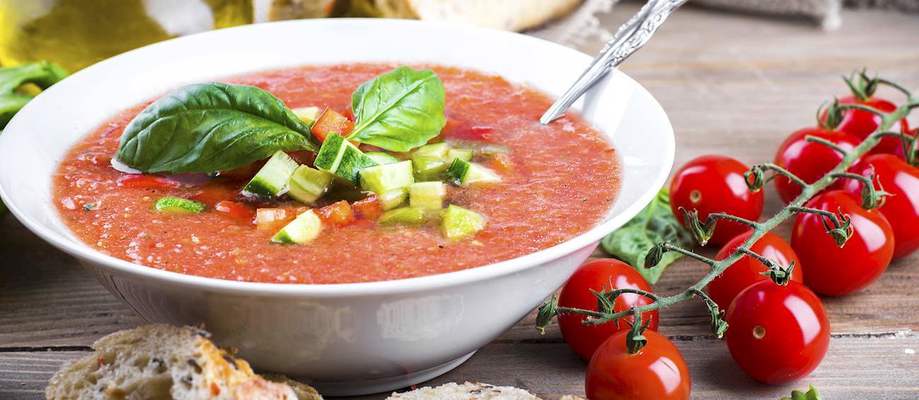PORTUGAL
STONE SOUP (Portuguese recipe)
STORYTELLING BY THE PORTUGUESE TEAM IN CZECH REPUBLIC
Sopa de Pedra (Portuguese Stone Soup)
Stone Soup is a European folk story in which hungry strangers convince the people of a town to each share a small amount of their food in order to make a meal that everyone enjoys, and exists as a moral regarding the value of sharing. In varying traditions, the stone has been replaced with other common inedible objects, and therefore the fable is also known as axe soup, button soup, nail soup, and wood soup.
This hearty portuguese vegetable soup comes from Ribatejo Province, but is popular all over the country. The legend is that a beggar asked a poor couple for something to eat, and when they declared their cupboard bare, he started to make soup with stones, and upon asking if they had a carrot, then an onion, and so on, finally got them to give him enough vegetables for soup. Now, the kidney beans represent the stones.
Ingredients
2 tbsp (25 mL) olive oil
3 onions, coarsely chopped
3 leeks, trimmed and thinly sliced
3 Potatoes and Carrots, diced
2 cloves of Garlic, minced
Cabbage, thinly sliced
chicken broth
1 bay leaf
250 g smoked Ham
125 g chunk chorizo (or other spicy sausage)
1 can tomatoes, undrained
1 can kidney beans, drained and rinsed
125 mL elbow macaroni
125 mL)chopped fresh Parsley
Salt and pepper
Instructions
In a large saucepan, heat oil over medium heat; cook onions and leeks for 10 minutes, stirring often. Stir in potatoes, carrots, garlic and cabbage. Add broth, bay leaf, ham and chorizo; bring to boil. Reduce heat, cover and simmer for 45 minutes.
Remove ham and chorizo; dice and return to pot. Add tomatoes and kidney beans, breaking up tomatoes with wooden spoon. Cover and simmer for 10 minutes. Add macaroni; simmer until al dente, about 10 minutes. Discard bay leaf. Stir in parsley, salt and pepper to taste.
In the meeting in Portugal, we had the opportunity to taste the Stone soup in our 1st day in the picnic with parents to celebrate "Angel Day", a typical celebration in Póvoa de Varzim
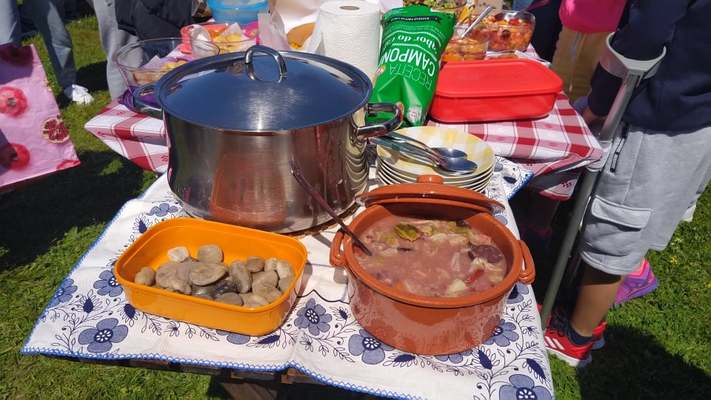
CZECH REPUBLIC
TRADITIONAL CZECH BREAD - (Recipe from the story "Otesánek")
"Otesánek" is a Czech fairytale by Karel Jaromír Erben. It is a story of a boy carved from wood who was so hungry that he ate not only all the food he could find but also his whole family and all the people he encountered. One of the things that Otesánek ate was a "pecen chleba" = a whole loaf of bread.
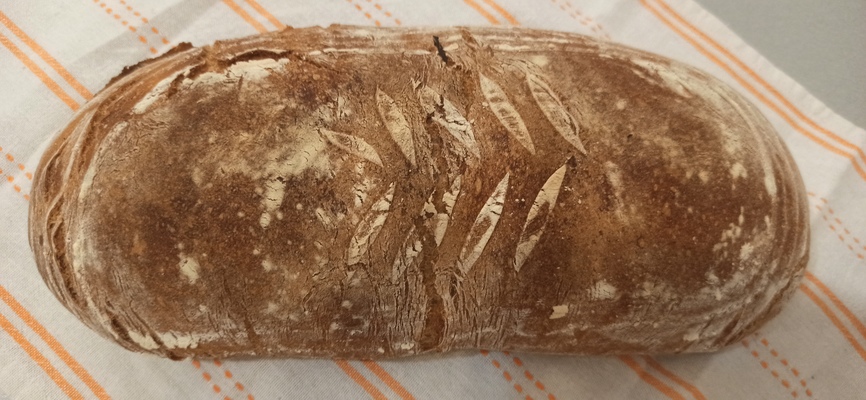
All participants of the Czech meeting could try the traditional bread during the welcoming ceremony (welcoming with bread and salt)
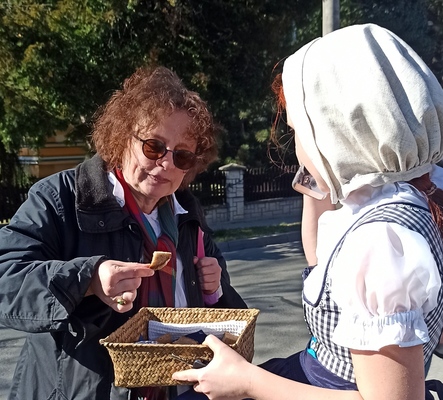
CROATIA
The Croatian domaca kobasica [homemade sausage]
- in our chosen fairy tale 'Gluttonia' sausages are mentioned when girl plays with them putting them on her ears.
Making sausages is a very important tradition in Croatia. Our fathers learned from their fathers, and from fathers of their fathers. Croatian sausages recipes were not written, but passed down as a family treasure.
There is no national holiday or cultural custom without them, and they are part of everyday expressions and songs.
There are many types of sausages, such us krvavica, češnjofka, kulenova seka, zimska. The most popular is named Kulen and it has protected status in EU.
The meat and fat ratio is from 80:20 to 85:15. The meat needs to be minced and the fat needs to be cut into tiny little cubes. You mix it all well, the meat, the fat, the spices and leave it to sit over night. The next day, you fill the sausage. After that, you hang them and dry them in a fumatory for couple of weeks to a couple of months.
Otto von Bismarck said: ‘Laws are like sausages, it is better not to see them being made’.
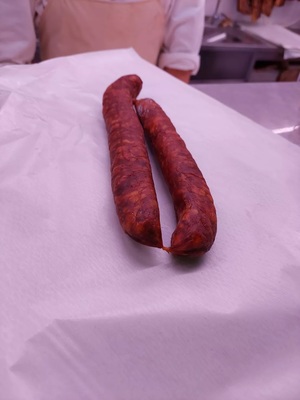
SPAIN
Vegetable soup
In our fairy tale, the characters cook a soup made of different vegetables. In Spain soups are quite traditional: noodle soup, garlic soup... The most famous one is Gazpacho:
Gazpacho is a cold soup consisting of crushed tomatoes, finely chopped cucumbers, onions, peppers, croutons, vinegar, and olive oil. The dish began as a light lunch that the wives brought to their husbands in the field in order to cool them down from the hot summer sun. Shortly after, it began to be served at the end of big meals, although today it is a popular summer appetizer.
Main ingredients:
bread, tomato, cucumber, onion, garlic peppers, salt, olive oil.
